Indoor plants bring life, color, and freshness to any home, but their growth depends heavily on one essential factor—light. While many plant lovers focus on watering and soil care, lighting often determines how lush and healthy your plants become. The right plant stand can make a huge difference, helping your green friends get closer to natural light sources while adding style and organization to your space.
In this comprehensive guide, we’ll explore the best plant stands for maximizing indoor light, how to position them effectively, and tips to ensure your plants receive just the right amount of sunshine year-round.
Why Light Positioning Matters for Indoor Plants

Plants need light for photosynthesis, the process that converts light energy into food for growth. However, indoor lighting is rarely uniform. Sunlight angles shift throughout the day, and some areas receive more natural light than others.
A plant stand not only helps elevate your plants toward brighter windows or skylights but also keeps them organized and stylishly displayed. More importantly, it can prevent overcrowding—a common issue when multiple plants compete for the same light source on a single surface.
When you strategically place stands near east-, south-, or west-facing windows, you ensure your plants receive balanced exposure without being scorched by direct sunlight.
1. Tiered Plant Stands – For Maximum Light Distribution
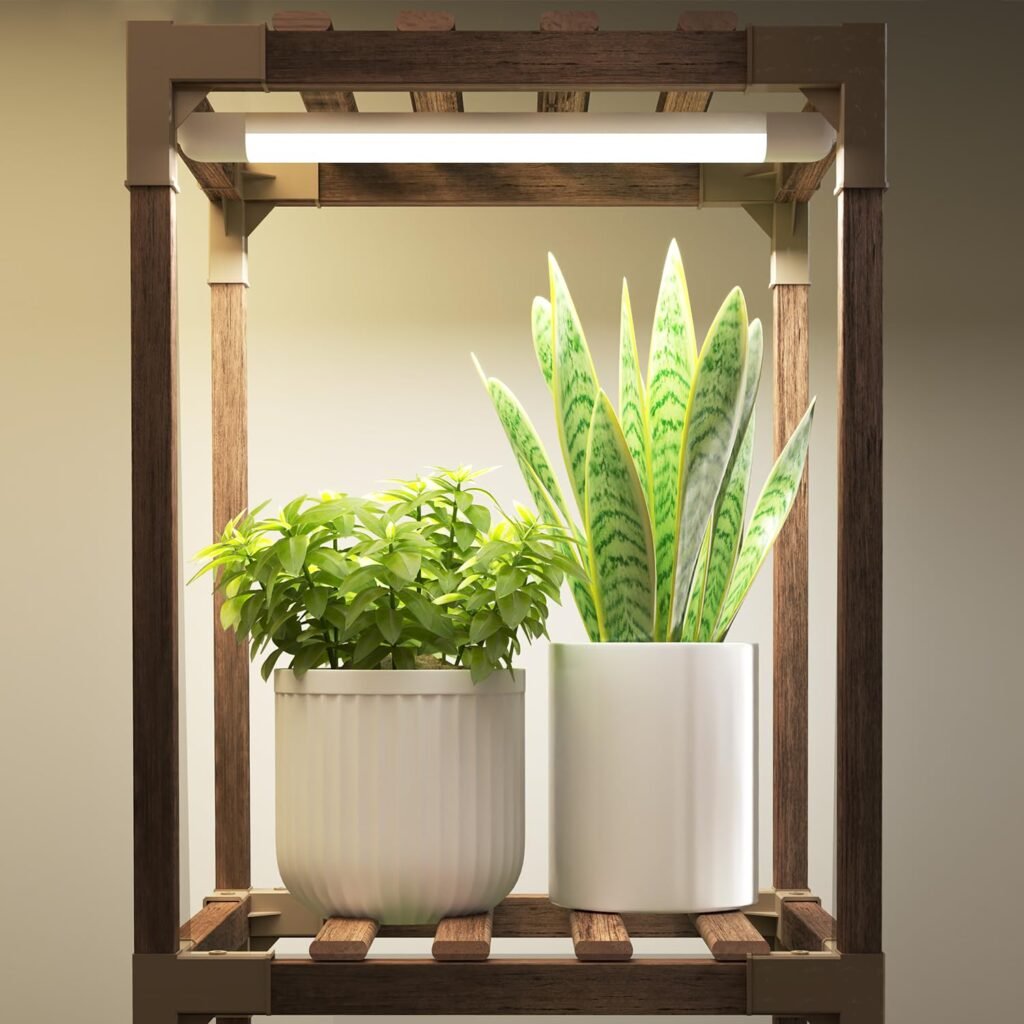
Best for: Multiple plants, small spaces, and corner setups.
Tiered stands are perfect for creating a layered green display while ensuring each plant gets adequate light. Their stepped or cascading design prevents the upper plants from shading the lower ones, making them ideal for bright rooms or near wide windows.
Benefits:
- Promotes even light exposure across all tiers.
- Great for mixing plant sizes—tall plants on top, trailing varieties below.
- Adds vertical interest to any room.
Pro Tip: Choose stands made of metal or bamboo, as they provide sturdiness and a modern look. Rotate your plants weekly to ensure uniform light exposure on all sides.
2. Adjustable or Telescopic Plant Stands – For Dynamic Lighting Conditions
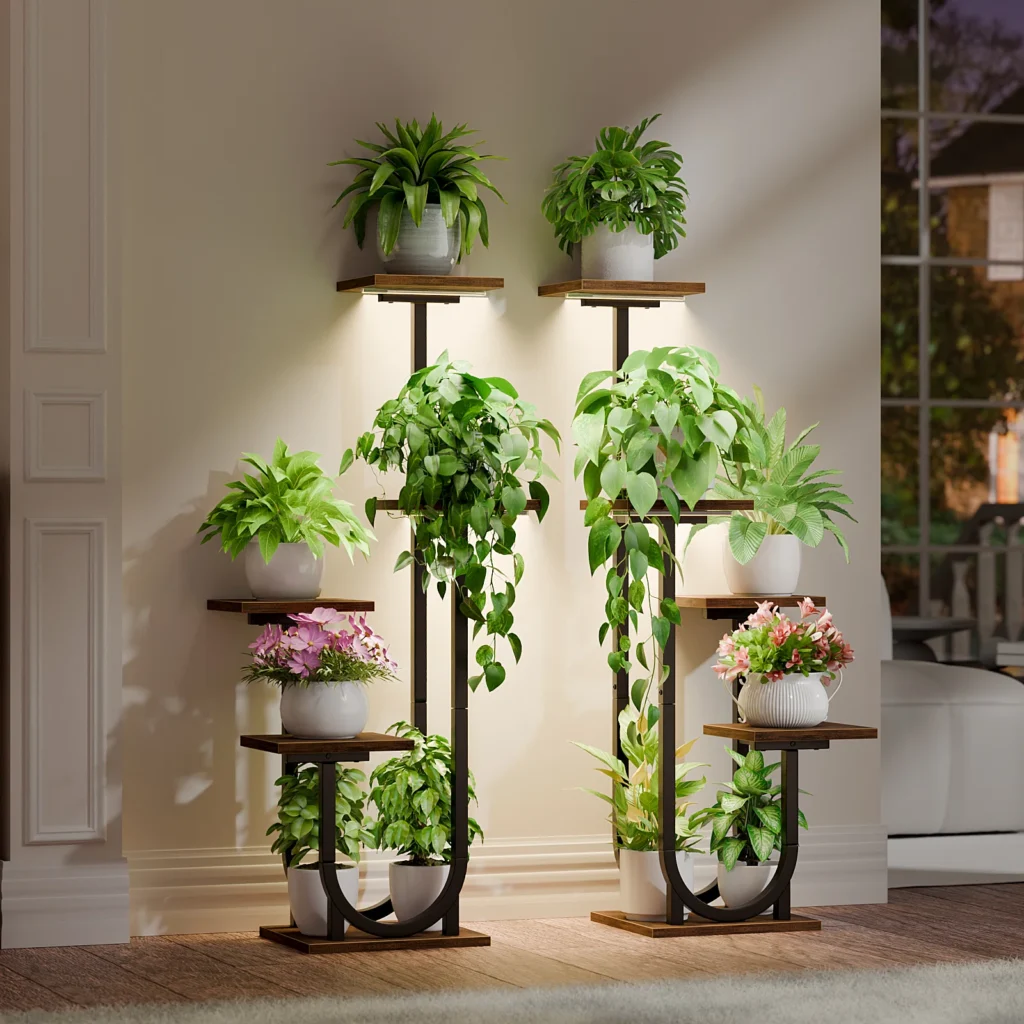
Best for: Homes with changing light angles or movable plants.
Adjustable-height stands are incredibly versatile, letting you raise or lower your plants based on their light needs or the season. During winter, for instance, you can elevate your plants closer to the window when sunlight is weaker.
Benefits:
- Flexibility to customize height for optimal sunlight.
- Works well for light-loving plants like succulents and cacti.
- Perfect for use with grow lights in dimly lit areas.
Pro Tip: Look for stands with locking mechanisms or stable bases to prevent wobbling when adjusting height.
3. Corner Plant Stands – For Making the Most of Limited Light
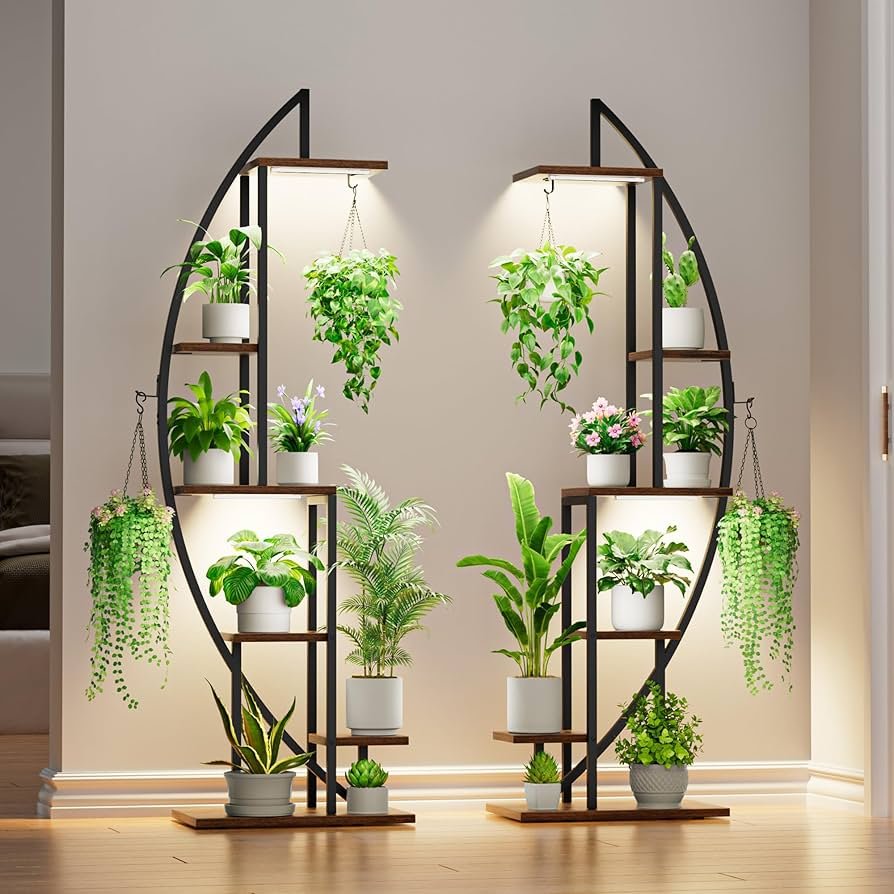
Best for: Corners near windows or under skylights.
Corners often go unused, but they can be a great place to showcase plants. A corner stand uses vertical space efficiently while catching indirect light reflected from nearby windows.
Benefits:
- Saves floor space while displaying multiple plants.
- Helps plants benefit from indirect or filtered light, ideal for species like pothos, peace lilies, and snake plants.
- Enhances room aesthetics with minimal clutter.
Pro Tip: Place a mirror behind the stand to reflect extra sunlight onto your plants—this is a clever way to amplify brightness naturally.
4. Window-Ledge or Hanging Plant Stands – For Maximum Natural Light
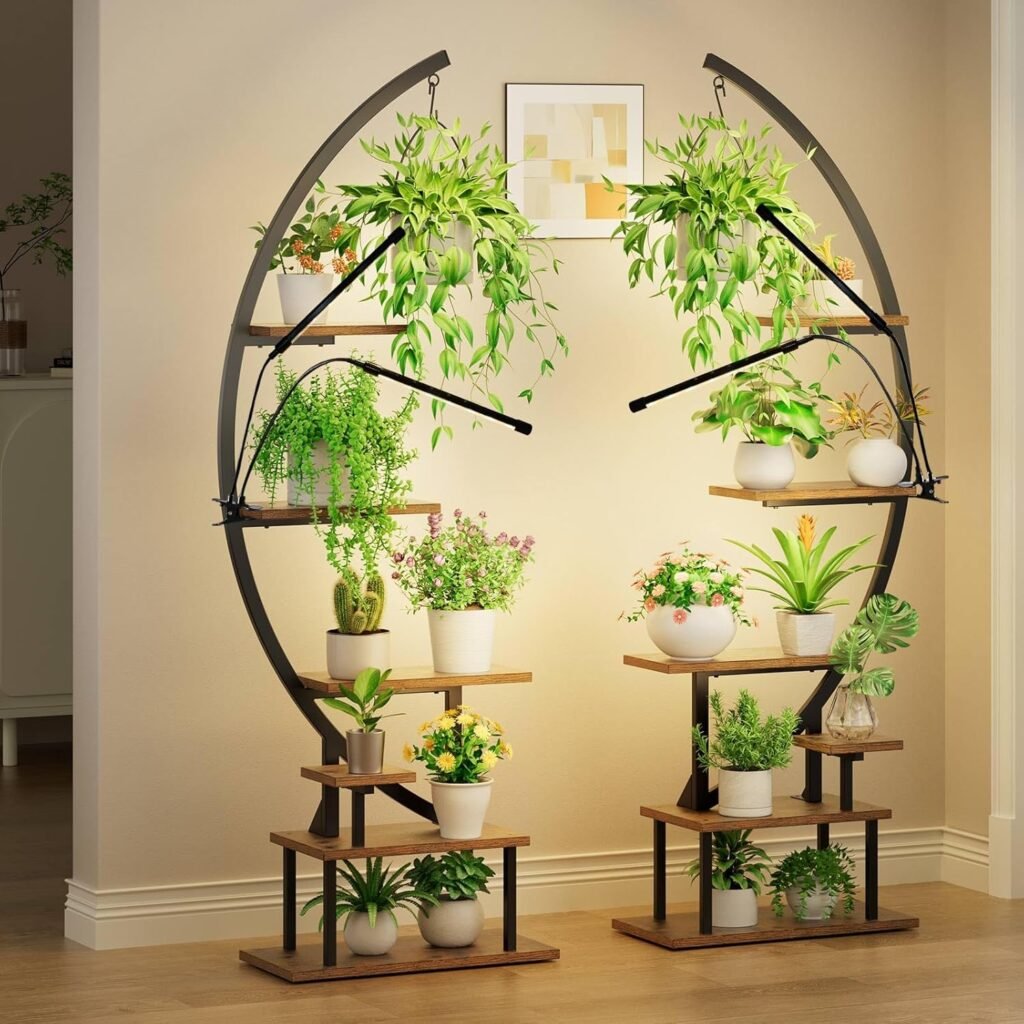
Best for: Small plants and sun-loving species like herbs, jade, or succulents.
If your window ledges are too narrow or crowded, window-mounted plant stands or hanging shelves can make use of vertical glass space. These allow plants to bask directly in natural sunlight throughout the day.
Benefits:
- Ensures uninterrupted light exposure for plants that crave direct sun.
- Great for urban apartments with limited floor space.
- Adds charm and freshness to windows.
Pro Tip: Rotate your plants frequently and use suction-cup shelves or wall brackets rated for your pot’s weight. Avoid placing delicate foliage directly against cold glass in winter.
5. Multi-Level Rolling Plant Stands – For Mobility and Light Chasing
Best for: Large collections and changing light zones.
A mobile plant stand with wheels is ideal for those who like to move plants around the house based on light availability. Whether you want to roll them into a sunny spot in the morning or keep them shaded in the afternoon, these stands make it effortless.
Benefits:
- Provides maximum flexibility in adjusting to light conditions.
- Perfect for heavy or large pots that are difficult to move manually.
- Encourages healthy growth for plants that thrive in shifting light zones.
Pro Tip: Opt for locking caster wheels to keep the stand secure once you’ve positioned it.
6. Ladder-Style Plant Stands – For Vertical Light Exposure
Best for: Narrow spaces or minimalist interiors.
A ladder-style stand allows plants to climb vertically, giving each level exposure to both direct and indirect light. They are ideal for displaying cascading or vining plants, which can trail beautifully over the edges.
Benefits:
- Excellent for sunny walls or balcony corners.
- Provides ample air circulation between plants.
- Blends functionality with artistic display.
Pro Tip: Place light-loving plants like succulents and ferns at the top, while shade-tolerant ones like ZZ plants or philodendrons can go on lower tiers.
7. Wall-Mounted and Floating Stands – For Creative Light Optimization
Best for: Compact rooms and decorative vertical gardens.
Wall-mounted shelves or floating plant stands can transform unused wall areas into a living art piece. They’re especially useful near large windows or under skylights, where light pours in from above.
Benefits:
- Keeps plants off the floor while maximizing space.
- Ideal for creating light-filled green walls.
- Can be arranged aesthetically for a modern interior look.
Pro Tip: Use sturdy wall anchors and lightweight pots to ensure safety and stability.
How to Position Plant Stands for Optimal Light
Even the best stand won’t work effectively without strategic placement. Follow these guidelines:
- South-Facing Windows – Brightest and best for tropical or desert plants. Use sheer curtains to diffuse harsh rays.
- East-Facing Windows – Gentle morning sunlight, perfect for most indoor plants.
- West-Facing Windows – Strong afternoon sun; great for succulents but can burn delicate leaves.
- North-Facing Windows – Minimal light; use stands with grow lights to supplement illumination.
You can also rotate stands every few weeks to help plants grow symmetrically and prevent them from leaning toward the light.
Material and Design Considerations
When choosing the right stand, balance aesthetic appeal with functionality.
- Wooden Stands: Offer a warm, natural look and suit rustic or bohemian interiors.
- Metal Stands: Durable and modern—ideal for heavy pots and sleek designs.
- Bamboo Stands: Eco-friendly, lightweight, and perfect for tropical vibes.
- Glass or Acrylic Stands: Reflect light beautifully, enhancing overall brightness in the room.
Always ensure that your stand can support the pot’s weight and has a waterproof surface to prevent damage from watering.
Final Tips for Maximizing Indoor Light with Plant Stands
- Clean windows regularly to ensure maximum light penetration.
- Dust leaves weekly—dirty foliage reduces light absorption.
- Use mirrors and light-colored walls to reflect light naturally.
- In winter, move stands closer to the window to make up for reduced sunlight.
- Supplement with grow lights if your space lacks sufficient natural light.
Conclusion
Investing in the right plant stand is more than just a design choice—it’s a strategy to help your plants flourish. By elevating your greenery and positioning them for optimal light exposure, you ensure steady growth, vibrant foliage, and healthy blooms all year round.
Whether you opt for a tiered display, rolling cart, or hanging shelf, the goal remains the same: to bring your plants closer to the light they love while enhancing your living space’s beauty and harmony.
With the perfect plant stand, your indoor jungle will not only thrive—but truly shine.
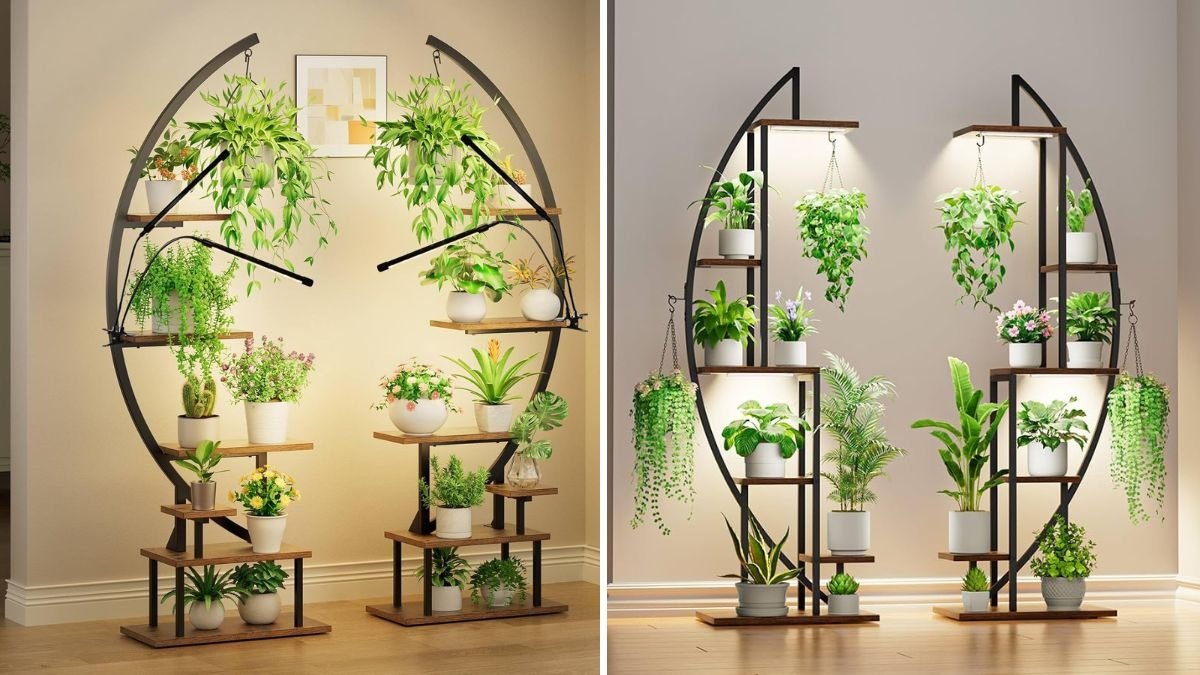




Leave A Comment